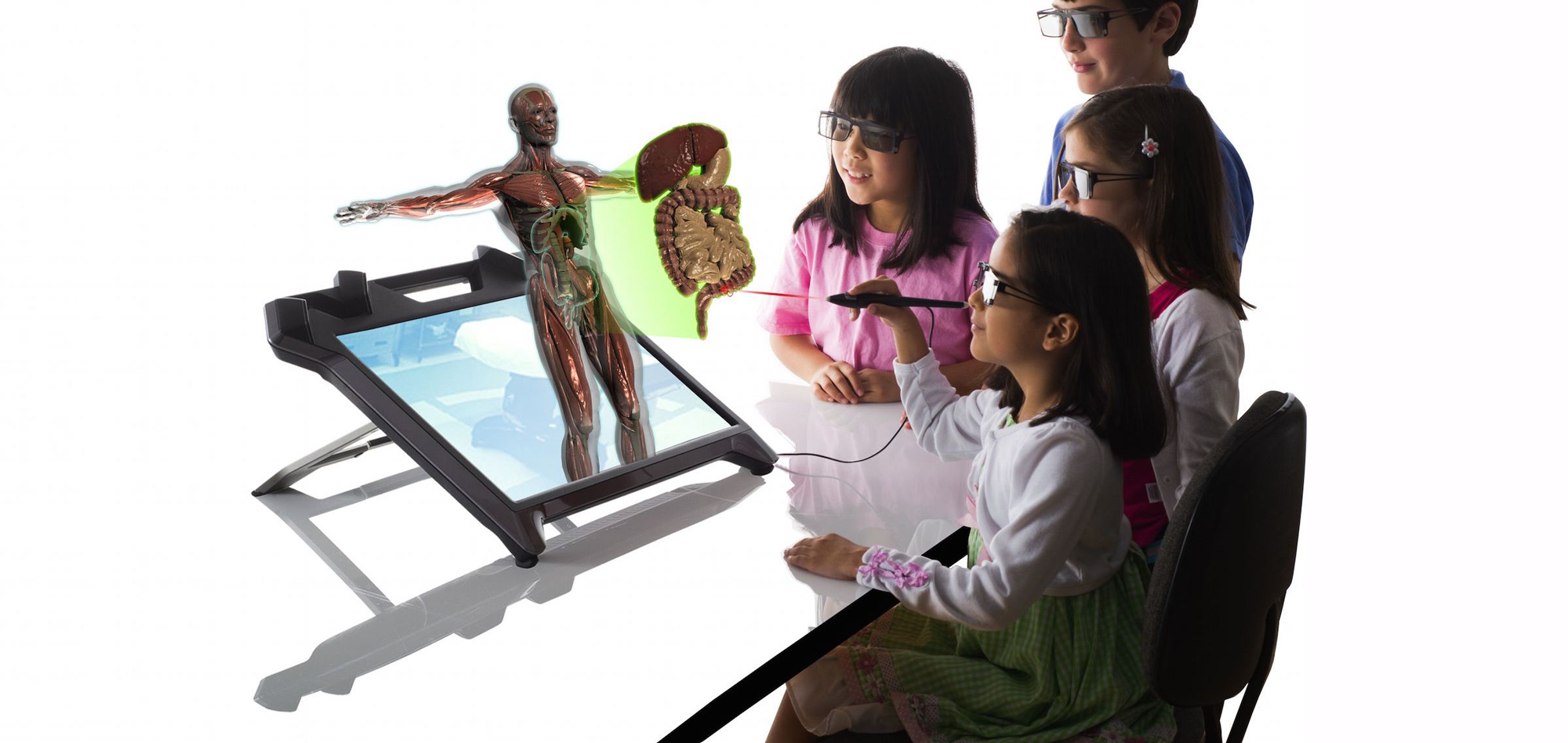According to EdSurge, US ed-tech companies raised a total of $1.36 billion in 2014 (up from $1.2 billion the year before), and investments in K-12 technologies this year have already eclipsed $679 million. Software development is behind this surge in educational investment, and we’ve listed several of our favorite innovations below:
1. Smartboards
Smart Technologies’ SMART Board is currently in three million classrooms worldwide, and uses LCD panels to create new possibilities with whiteboarding in the classroom.
The digital board allows information to be displayed and manipulated in real time with the touch of a finger, and scrolling and querying for additional information is easy. The SMART Learning Suite combines lesson delivery, assessment, student collaboration, and game-based learning software in one educational hub. The software has the ability to connect students, teachers, and devices outside the classroom: it allows the user to save and share notes, and everything written on the board can be saved for future reference. Students can also follow instruction remotely from their personal device.
2. Virtual Reality

Google’s Expedition project, launched in September 2015, allows teachers to take students on virtual field trips with help from a Cardboard headset. This virtual reality project has taken more than a million students to a growing collection of digital destinations such as Machu Picchu, Antarctica, and the International Space Station.
In medicine, industrial design, and other fields, VR technology has great potential for students to observe procedures in real-time, without leaving the classroom.
3. Online Learning
46 percent of college students are taking at least one course online, and that percentage is predicted to grow. The proliferation of online learning software can break down geographic and financial barriers to education, and students have more options for customizable instruction than ever before.
The Khan Academy—whose academic resources are being translated into more than 36 languages—offers free, online courses in math, science, computer programming, history, art, and economics. Code.org offers elementary, intermediate, and high school coding lessons for both teachers and students. Both communities make learning fun, interactive, and geographically flexible.
4. Social Resource Sharing
Edmodo is an educational network that helps teachers, students, and parents connect outside of the classroom. The network offers parents a way to stay involved in their child’s learning, and to better understand how their students may be succeeding or struggling in the context of a curriculum calendar. Teachers and students can share content and use the app as a hub for notifications, assignment submissions, grading transparency, polls, and more.
Users can follow discussion topics like algebra, economics, flipped classrooms, and programming, and teachers can browse Edmondo’s resource database for lesson plans, test questions, and worksheets.
5. Homework Help
eNotes has crowdsourced a database of more than 330,000 questions, offered by students, teachers, and specialists. eNotes piggybacks on teachers and professors from all over the world in answering academic questions, and offers additional support in essay writing, as well.
SparkNotes provides free study guides for mobile devices (8 of 10 high school students owns a smartphone, and the number of students using smartphones in class increased from 44 percent to 53 percent in 2015). Popular study guides include literature, poetry, philosophy, and short-story writing. The company also offers downloadable study guides for offline access, and includes an option to check in and share your current location with friends so you can easily start a study group.
Innovations in ed-tech won’t solve all of America’s challenges concerning academic access, administration, and curriculum—but they do represent an opportunity to improve our economy and our classrooms simultaneously.
Learn more about careers in code (and our classroom experience) at an upcoming Code 101 workshop.

